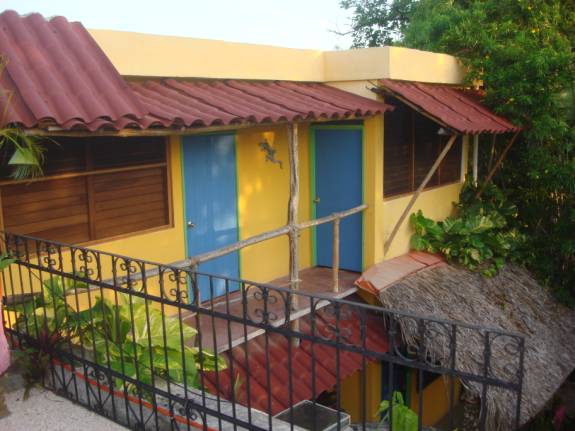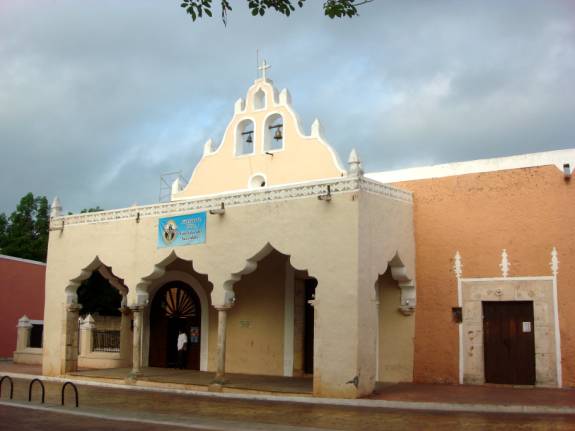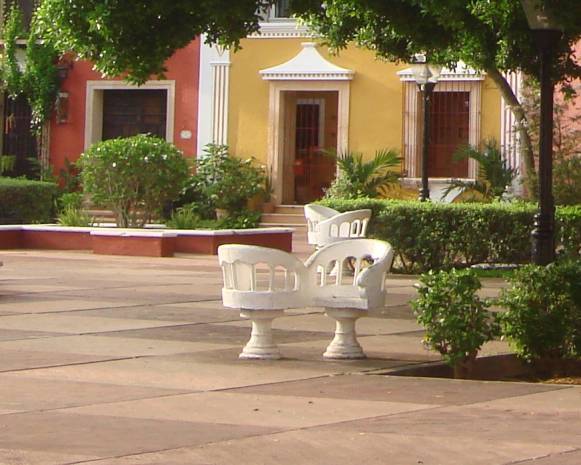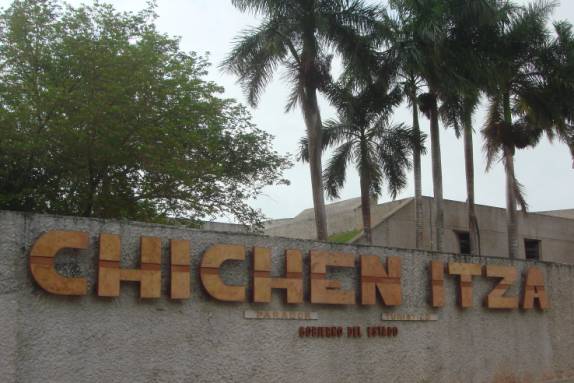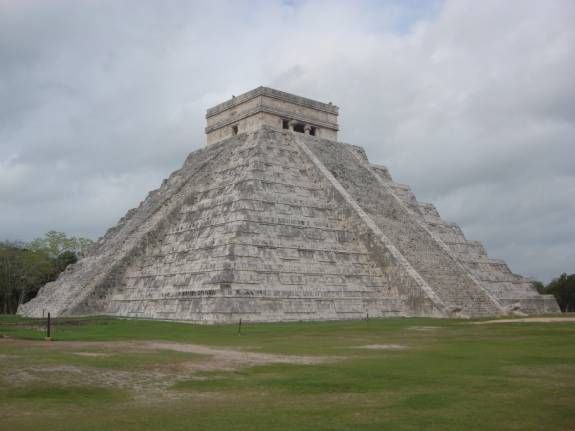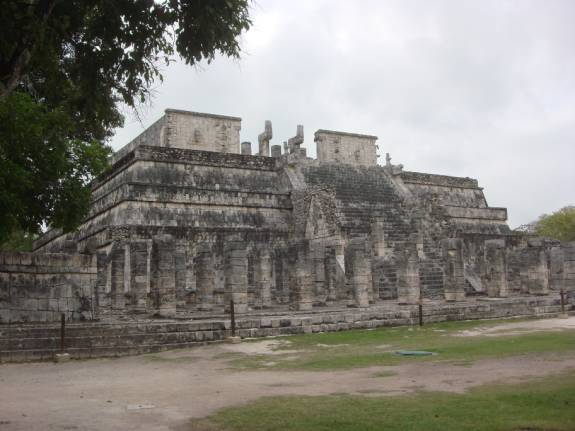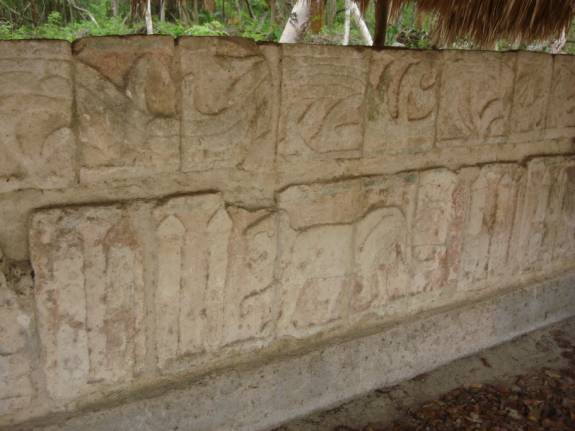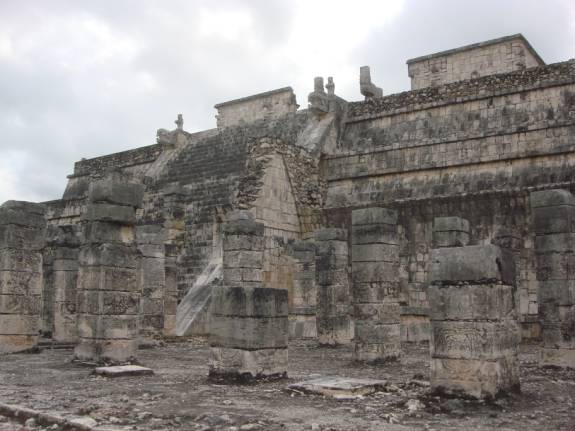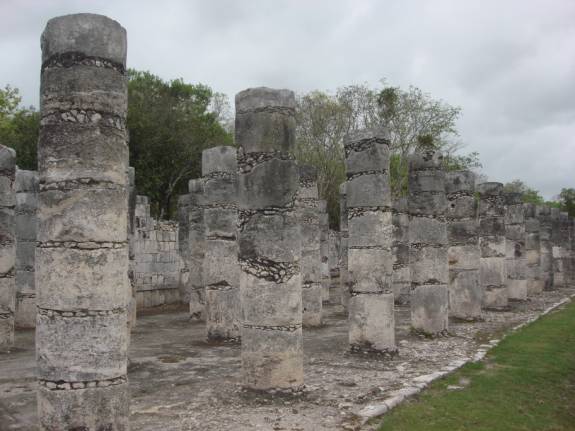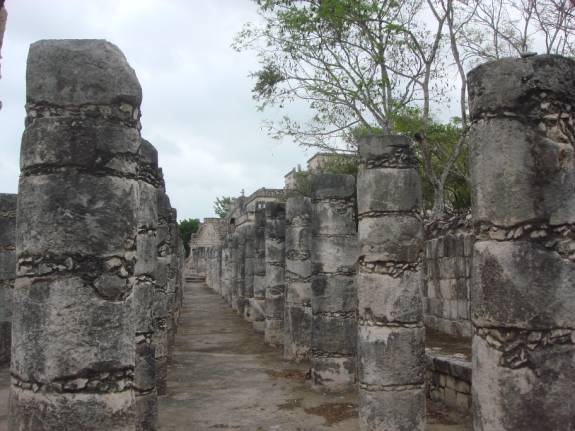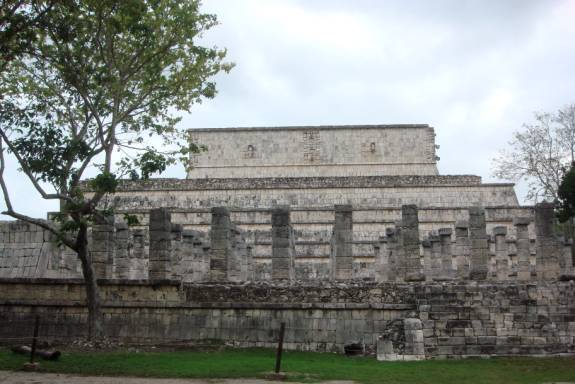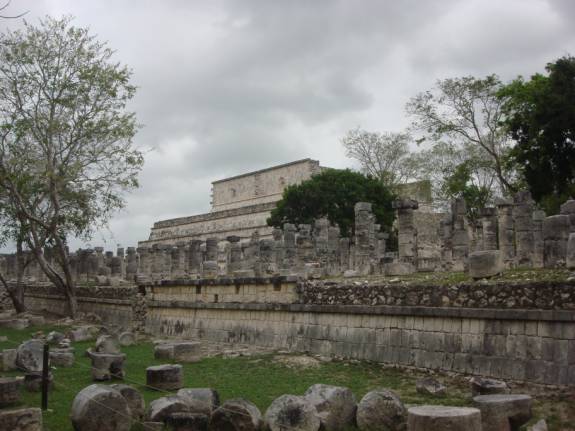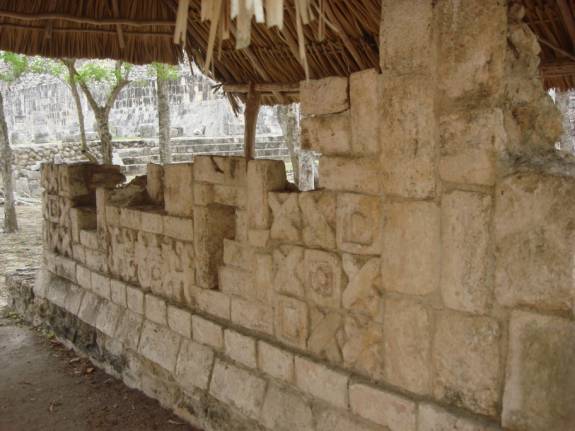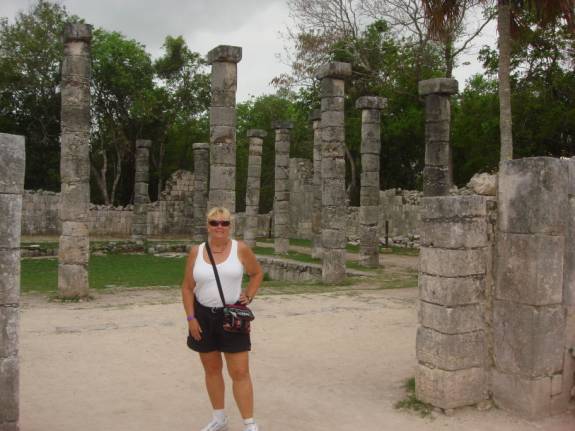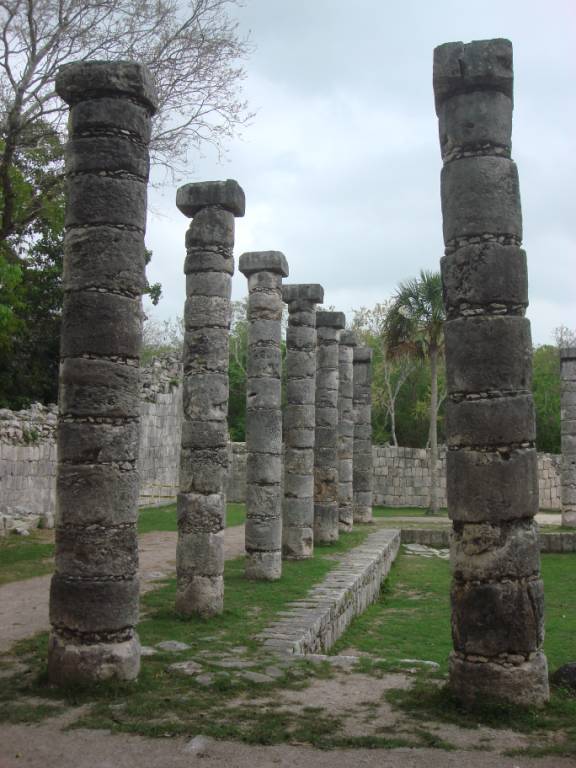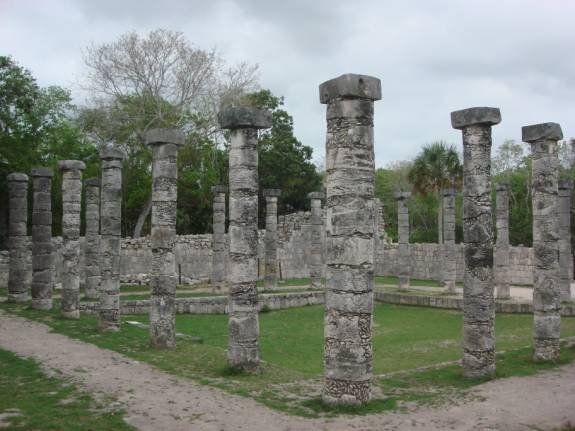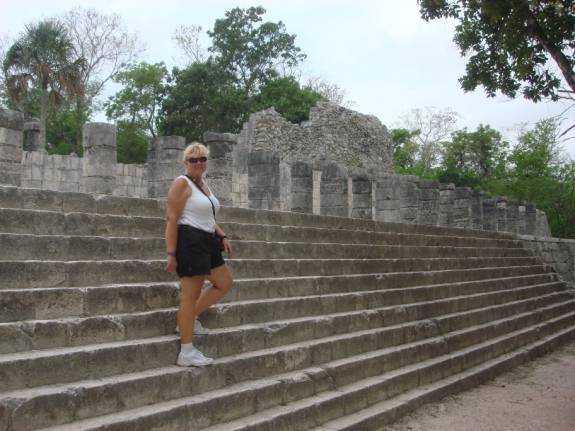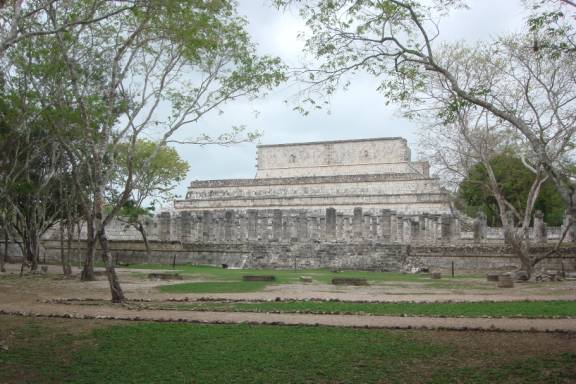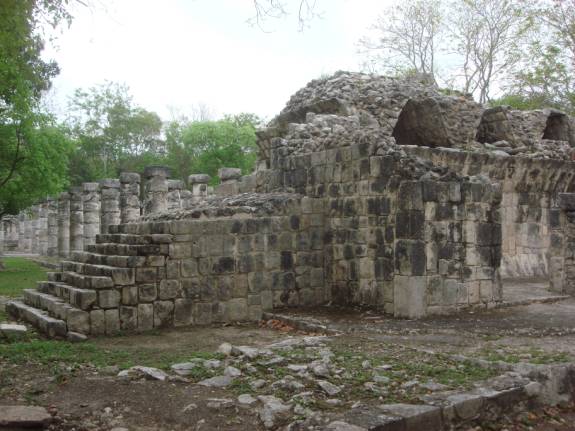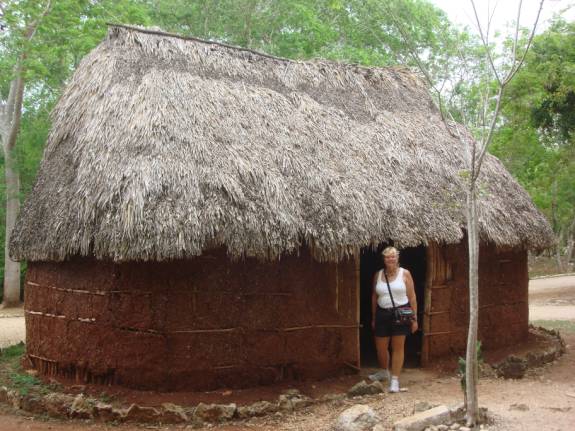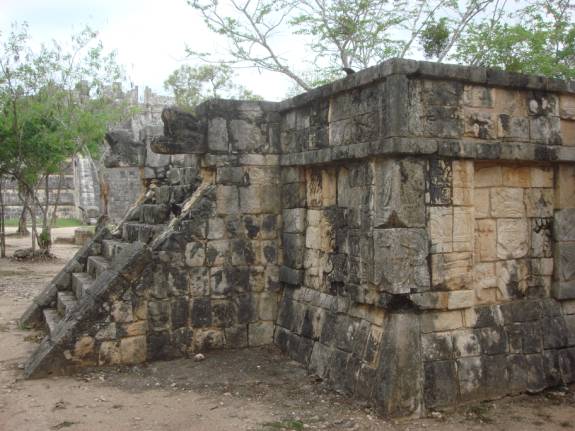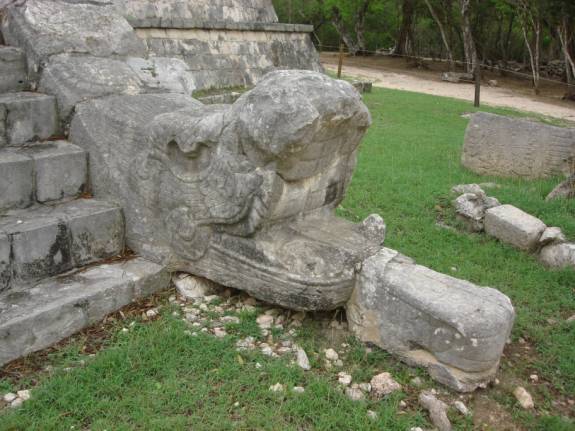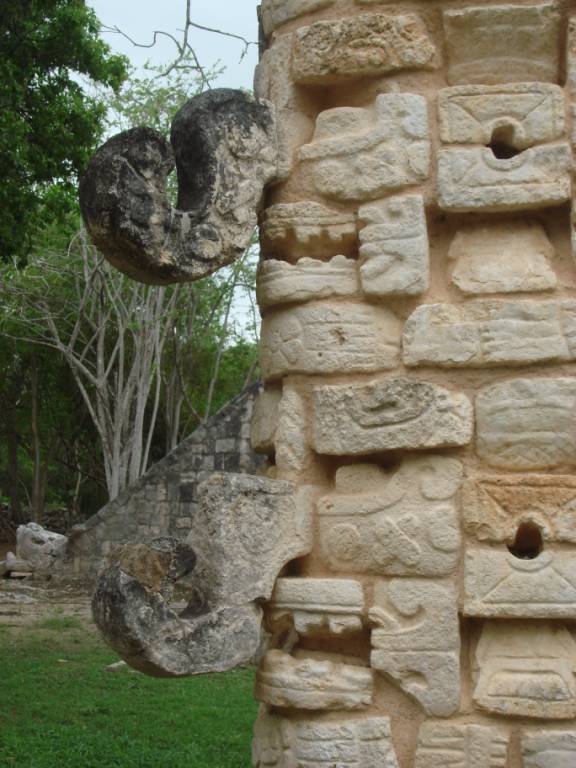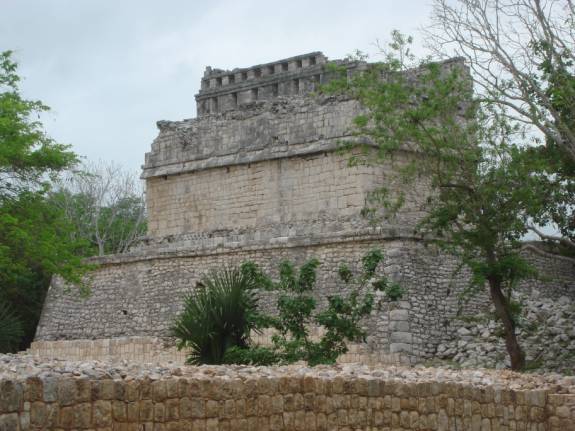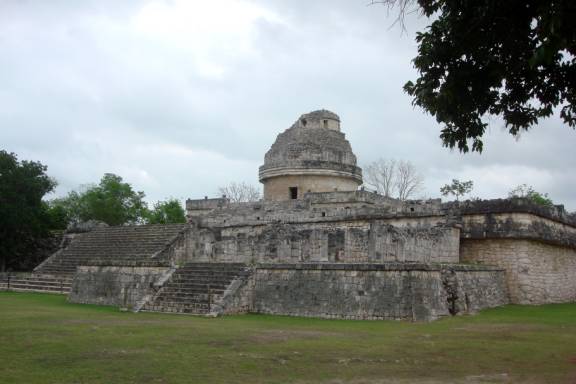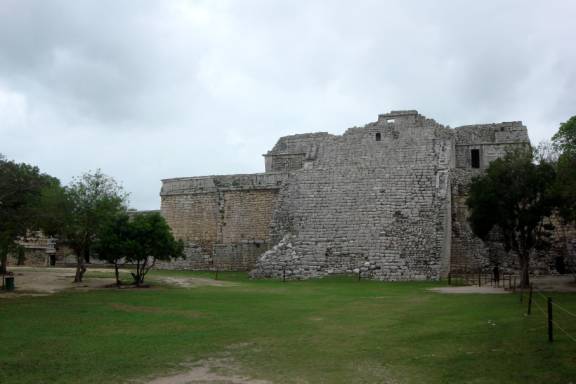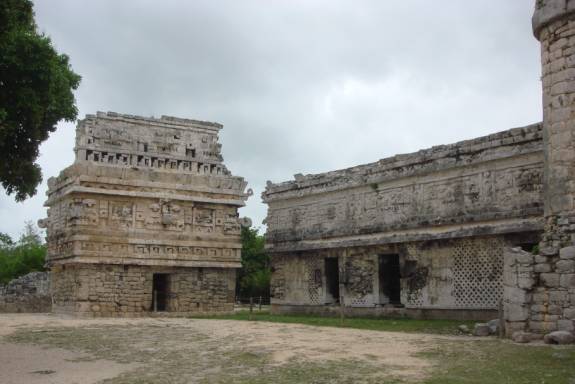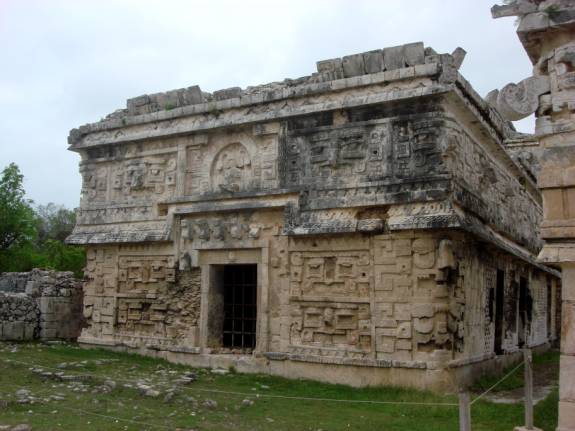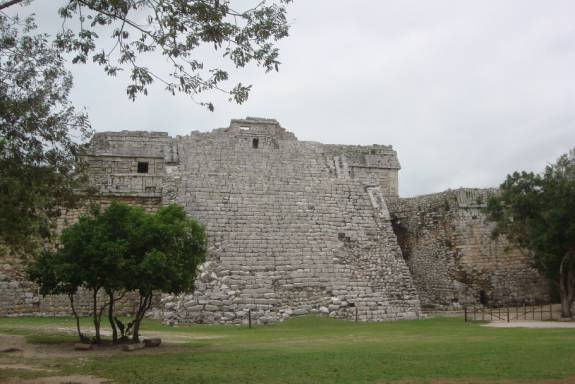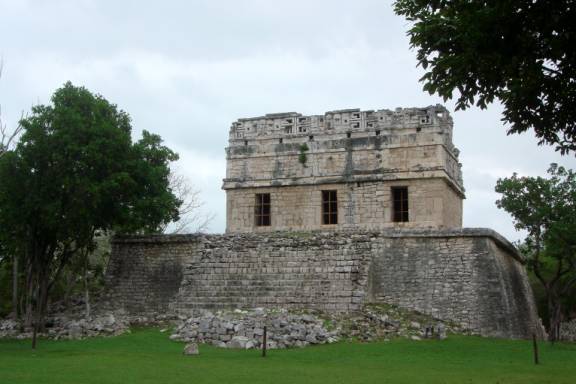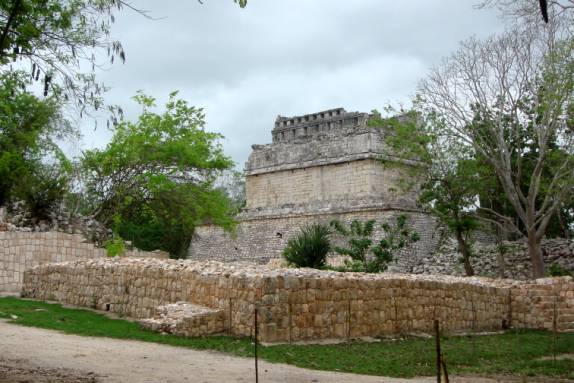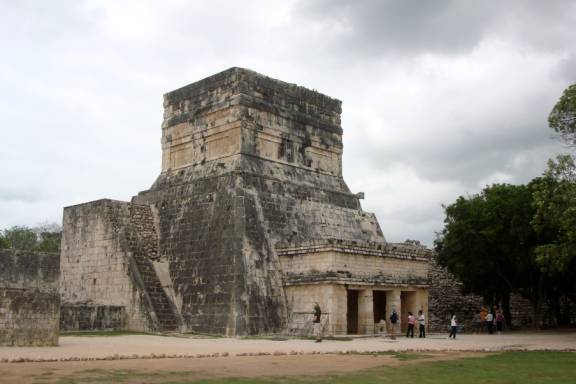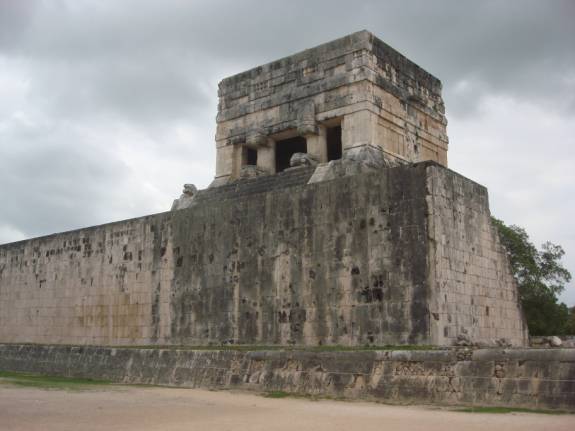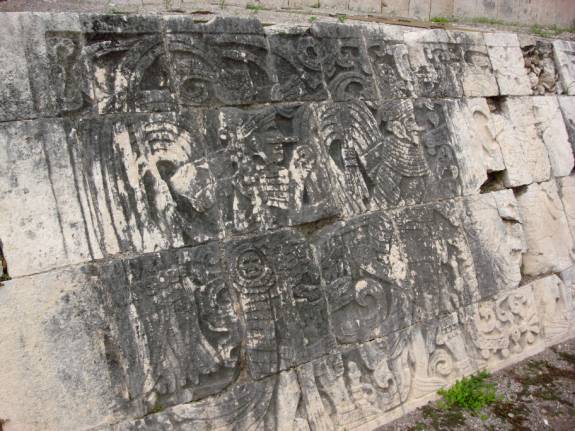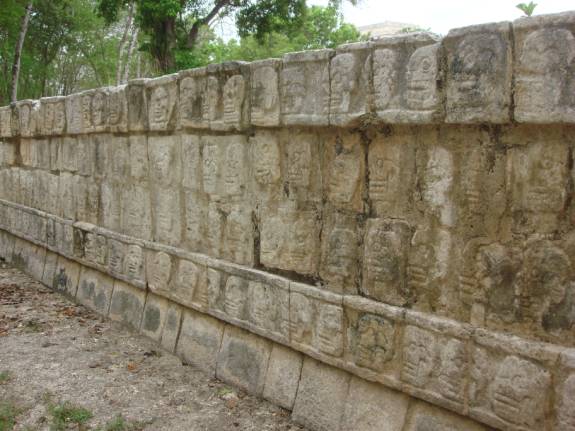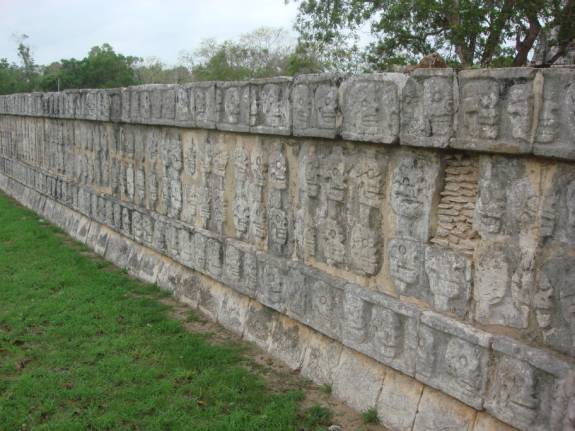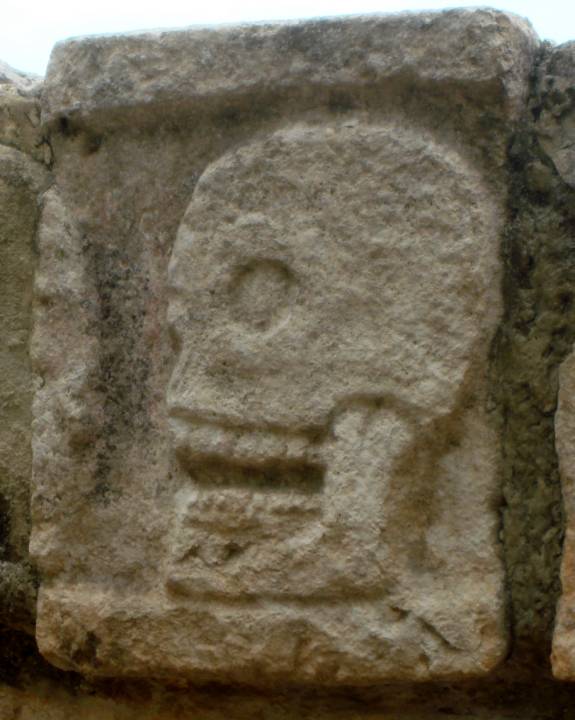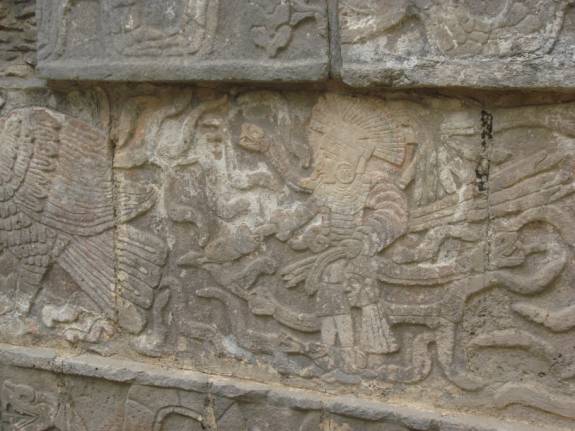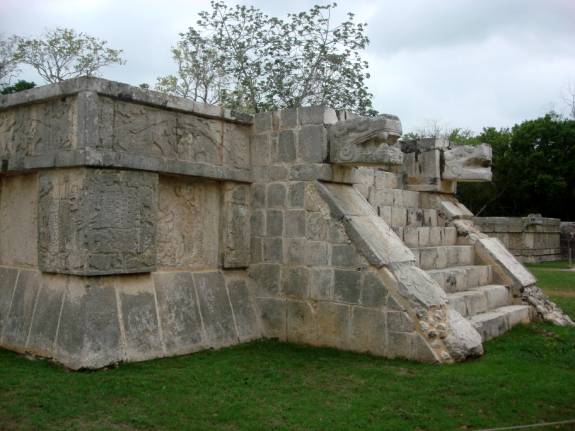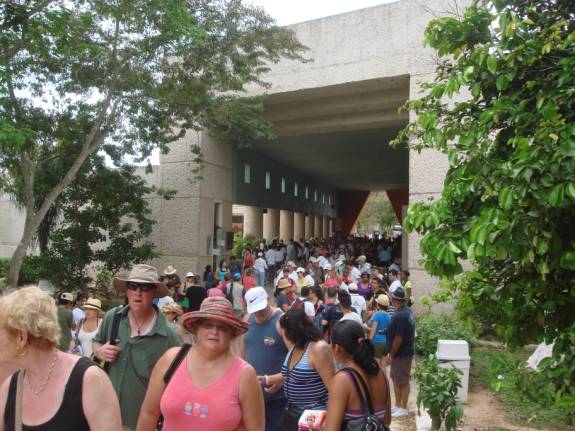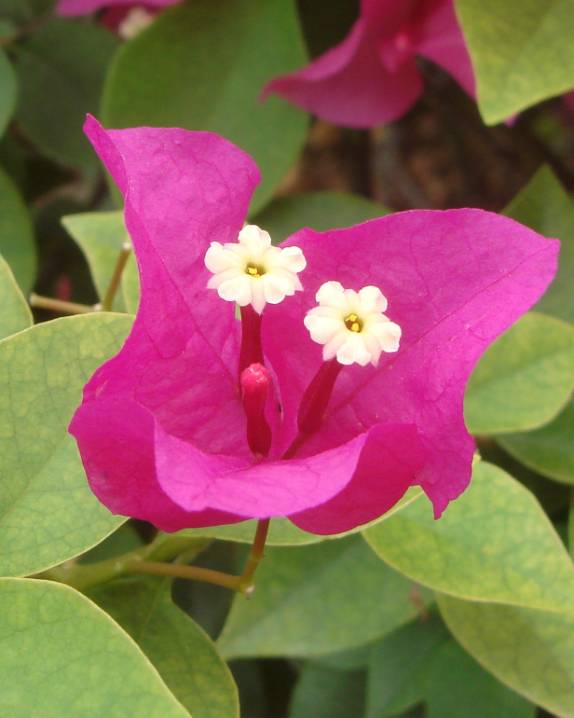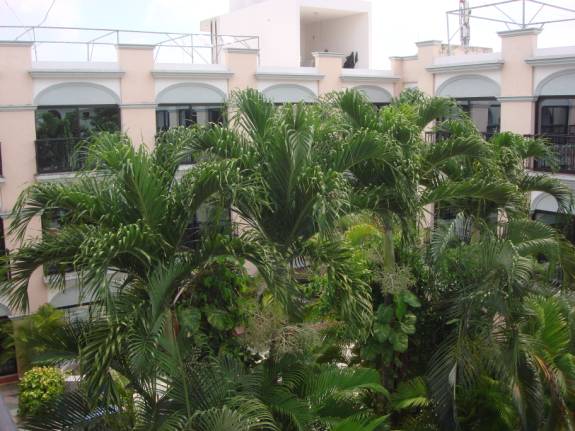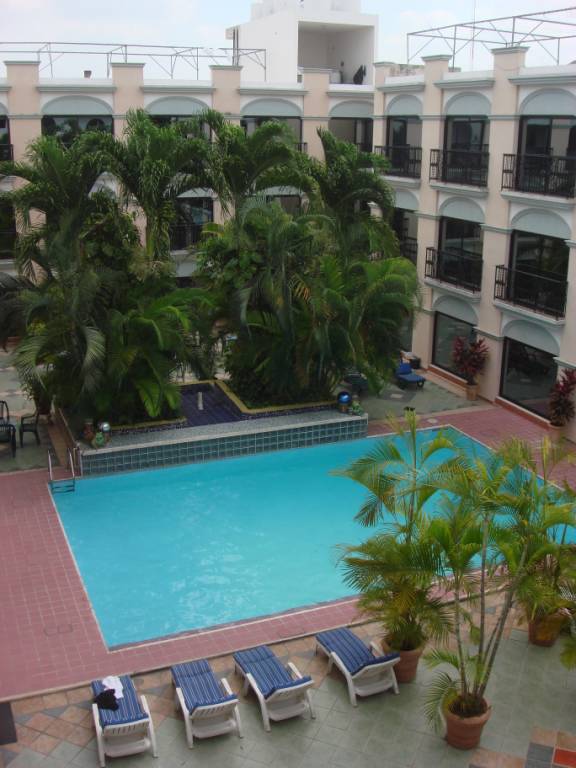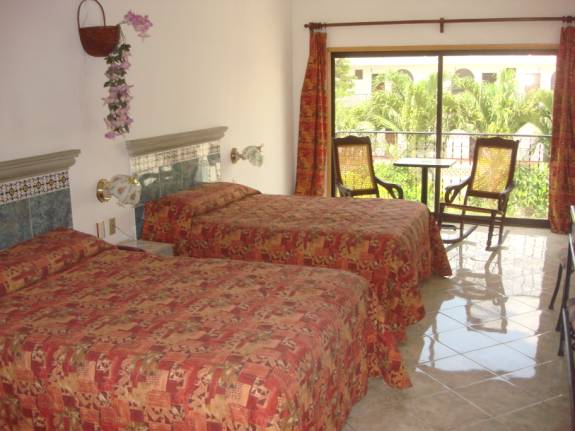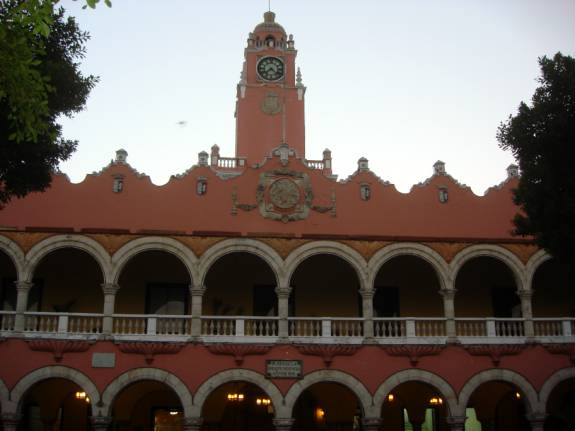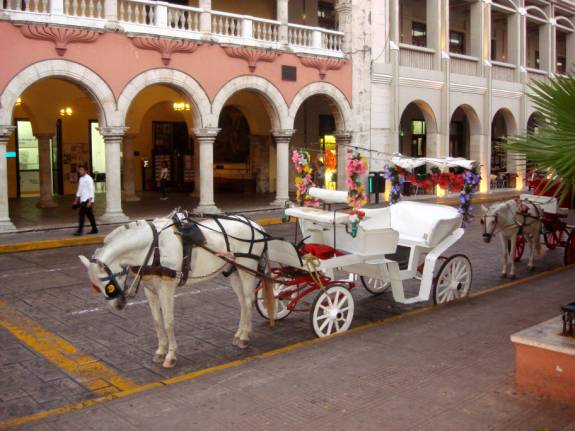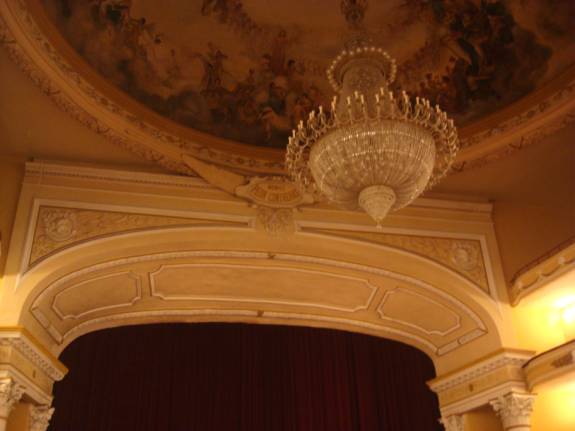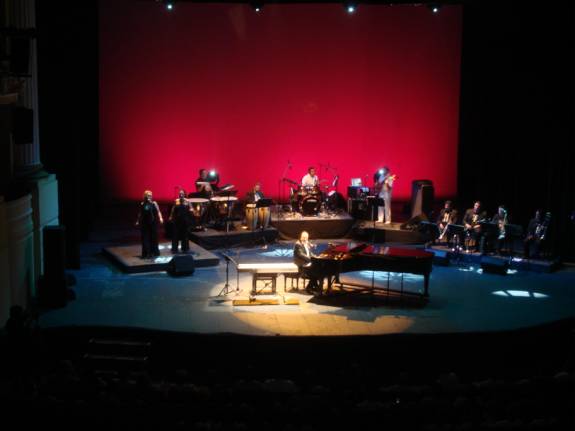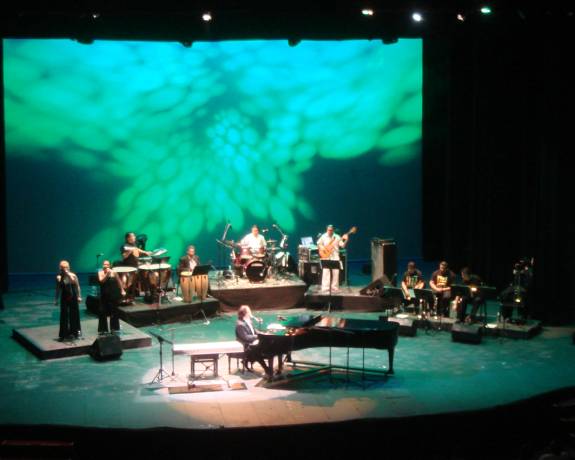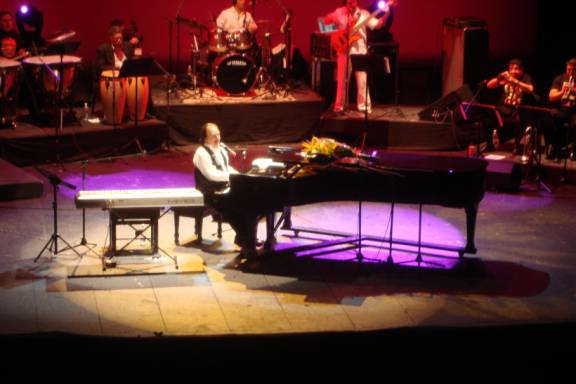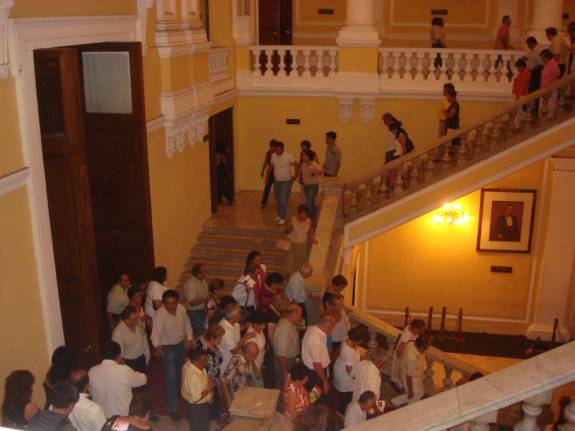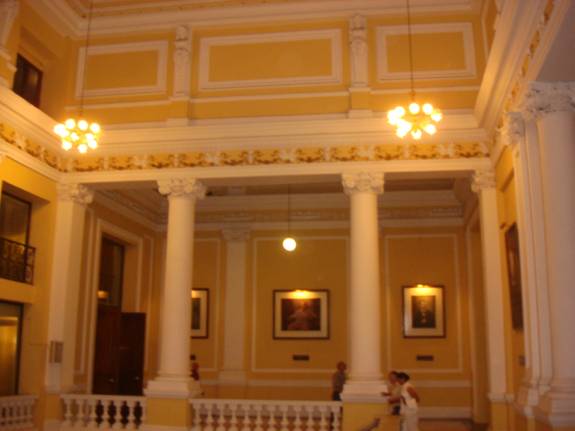|
|
|
|
Site Index:
|
UPDATE#12
04/30/2010
Howdy
Everybody, The adventures
of 2006, 2007, 2008, 2009, and thru 04/29/2010 have been published on the
website. We continue with the
latest edition. UPDATE
2010 #12 04/30/2010 At last update,
we were traveling on a Yucatan adventure in Mexico.
Welcome back to our continuing adventure… 04/30/10
FRIDAY VALLADOLID to CHICHEN
ITZA to MERIDA
Our upper level room
at the Casa La Candelaria guesthouse, in the city of Valladolid, enabled us to
get rested up for another exciting day.
Across from the
guesthouse, a modern chapel has taken on the façade of antiquity.
Adjacent to the
guesthouse, a lovely little park provides friends, or lovers, with these
charming seat arrangements known as “confidenciales”.
The closely joined, opposed-facing seats allow a pair to speak quietly
and confidentially while enabling them to look into each other’s eyes. They are a wonderful and unique design.
After packing up and
checking out of our guesthouse, we headed further west to the most visited Mayan
site in all of Mexico, Chichen Itza.
Chichen Itza was a
major focal point in the northern Maya lowlands from the Late Classic through
the Terminal Classic and into the early portion of the Early Postclassic period.
The site exhibits a multitude of architectural styles.
The site contains many fine stone buildings in various states
of preservation, and many have been restored. The buildings are connected by a
dense network of formerly paved roads, called sacbeob or sacbe.
Archaeologists have found almost 100 sacbe criss-crossing the
site, and extending in all directions from the city.
The buildings of Chichén Itza are grouped in a series of
architectonic sets, and each set was at one time separated from the other by a
series of low walls. The three best known of these complexes are the Great North
Platform, which includes the monuments of El Castillo, Temple of Warriors
and the Great Ball Court; The Ossario Group, which includes the
pyramid of the same name as well as the Temple of Xtoloc; and the Central Group,
which includes the Caracol, Las Monjas, and Akab Dzib.
Dominating the center
of Chichén is the Temple of Kukulkan (the Mayan name for Quetzalcoatl).
It is often referred to as "El Castillo" (the castle).
This step pyramid has a ground plan of square terraces with stairways up each of
the four sides to the temple on top. On the Spring and Autumn equinox, at the
rising and setting of the sun, the corner of the structure casts a shadow in the
shape of a plumed serpent - Kukulcan, or Quetzalcoatl - along the west side of
the north staircase. On these two annual occasions, the shadows from the corner
tiers slither down the northern side of the pyramid with the sun's movement to
the serpent's head at the base.
The Temple of the
Warriors complex consists of a large stepped pyramid fronted and flanked by
rows of carved columns depicting warriors.
At the top of the
stairway on the pyramid’s summit (and leading towards the entrance of the
pyramid’s temple) is a Chac Mool.
Along the south wall
of the Temple of Warriors are a series of what are today exposed columns,
although when the city was inhabited these would have supported an extensive
roof system. The columns are in three distinct sections: an east group, that
extends the lines of the front of the Temple of Warriors; a north group, which
runs along the south wall of the Temple of Warriors and contains pillars with
carvings of soldiers in bas-relief; and a northeast group, which was apparently
formed a small temple at the southeast corner of the Temple of Warriors, which
contains a rectangular decorated with carvings of people or gods, as well as
animals and serpents. The northeast column temple also covers a small marvel of
engineering, a channel that funnels all the rainwater from the complex, some 130
ft away, to a rejollada, a former cenote.
An inchworm wiggles
its way along the stone facings.
This would be an
example of a typical Mayan habitation, constructed of wood, mud, and thatch.
Ossario,
somewhat like El Castillo, is a step-pyramid temple dominating the platform,
only on a smaller scale. Similar to El Castillo, it has four sides with
staircases on the respective sides. There
is a temple on top, but unlike El Castillo, at the center is an opening into the
pyramid which leads to a natural cave approximately 39 ft below.
El
Caracol is a cockeyed, round building on a large square platform. It's
nicknamed El Caracol ("the snail") because of the stone spiral
staircase inside. The structure, with its unusual placement on the platform and
its round shape (the others are rectangular, in keeping with Maya practice), is
theorized to have been a proto-observatory with doors and windows aligned to
astronomical events, specifically around the path of Venus.
Constructed
in the Puuc architectural style, the Spanish nicknamed this complex Las
Monjas ("The Nuns" or "The Nunnery"). The group was actually a governmental palace. Just to the
left is a small temple (nicknamed La Iglesia, "The Church")
decorated with elaborate masks of the rain god Chaac.
The
Upper Temple of the Jaguar overlooks the ball court and has an entrance
guarded by two, large columns carved in the familiar feathered serpent motif.
In the entrance to the Lower Temple of the Jaguar, which opens
behind the ball court, is another Jaguar throne, similar to the one in the inner
temple of El Castillo, except that it is well worn and missing paint or other
decoration. The outer columns and the walls inside the temple are covered with
elaborate bas-relief carvings.
At
one end of the Great Ball Court is the North Temple, popularly called the Temple
of the Bearded Man.
The
Tzompantli, a low, flat platform monument, is surrounded with carved
depictions of human skulls.
The Platform of the
Eagles and the Jaguars is built in a combination Maya and Toltec styles.
Each side has a staircase to the top. Carved into the sides, there are panels
depicting Eagles and Jaguars consuming what appear to be human hearts.
One end of the Great
Ball Court…
The
Cenote Sagrado (Sacred Cenote)(cenotes are sinkholes that expose the
natural water table to the surface). It was a place of pilgrimage for ancient
Maya people who, according to ethnohistoric sources, would conduct sacrifices
during times of drought. Archaeological
investigations support this as thousands of objects have been removed from the
bottom of the cenote, including materials such as gold, jade, obsidian, shell,
wood, cloth, as well as skeletons of children and men.
Arriving from Cancun,
hoards of tourists, packed into hundreds of tour group buses, literally invade
the site each day. It is best to
stay nearby and arrive early, allowing your personal experience to be enhanced
without the hindrance of massive crowds.
Take time to enjoy the
beautiful flowers…
This one brings to my
mind the smiling face of a comical cartoon character…
Having taken advantage
of our early visit to Chichen Itza, we were able to continue west to the
colonial city of Merida. We
had booked reservations, online, at the Hotel Dolores Alba.
We found it to be very nice, centrally located, friendly, and it had a
pool. The Yucatan was experiencing
a record heat wave.
The municipal
palace…
Merida is a delightful
city that offers a wide variety of entertainment venues.
As the state and regional
capital, Mérida is a cultural center, featuring multiple museums, art
galleries, restaurants, movie theatres and shops. Mérida retains an abundance
of beautiful colonial buildings and is a vibrant cultural center with music and
dancing playing an important part in day-to-day life. The people of
Merida are quite mindful of the arts and enjoy performances in their
magnificently restored theatre, the Teatro
Jose Peon Contreras.
Tonight’s
performance featured the musical styling of a favored Mexican pianist and his
orchestral group of musicians and singers.
It was wonderful!
The theatre offers
great acoustics and high-tech stage lighting.
At night, several of
the streets in the historic center are closed to vehicular traffic and are set
up in an outside café/restaurant atmosphere.
We hope you will join us in the continuation of our Yucatan Adventure in
the next update section.
CONTINUING
UPDATES ARE IN PROGRESS…
WATCH
FOR THEM, COMING SOON… POST SCRIPT:
We sincerely hope that
you will review the previous years of compilations to give context to the
current editions. Please let us
know if you have any special suggestions and thoughts.
REMEMBER:
The website is now fully active and you can visit it at any time.
You can also review any of the previous logs from the years 2006, 2007,
2008, and 2009 to learn more about the crew and their many adventures. Enjoy. ATTENTION:
SPECIAL NOTE:
You may contact us via
email anytime. Thanks
for allowing us to share our life and adventures with you. Lotsa
Luv, Fred
Reed and Judy Law AMARSE MT40 "AMARSE"
is
pronounced "AM-ARE-SAY".
Our website is:
www.amarse.net
.
CONTINUING
UPDATES ARE IN PROGRESS…
WATCH FOR THEM, COMING SOON…
|
|
Fred H. Reed |
www.amarse.net © 2006 2007 2008 2009 2010 2011 |

